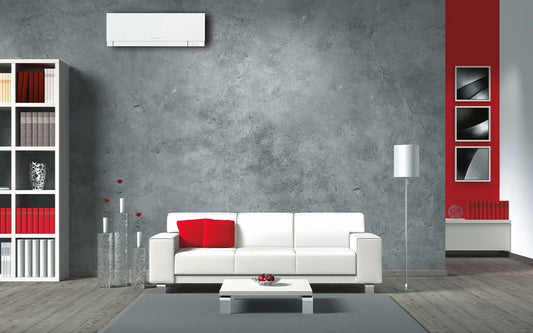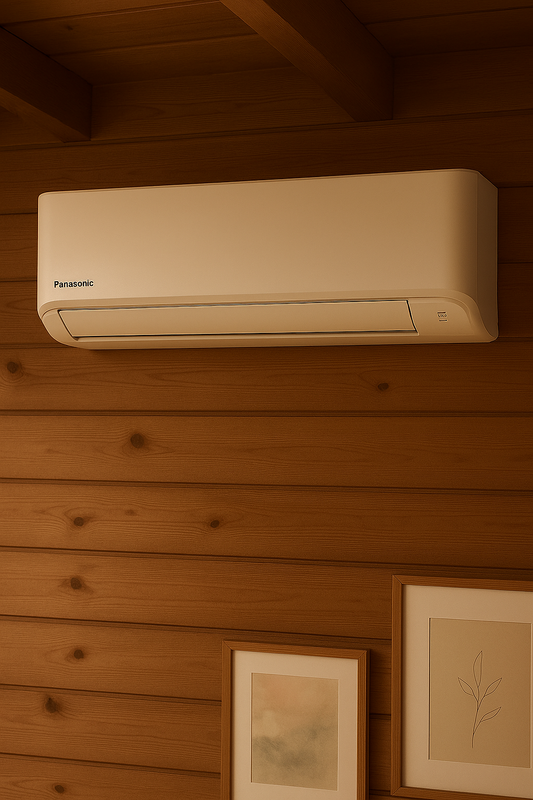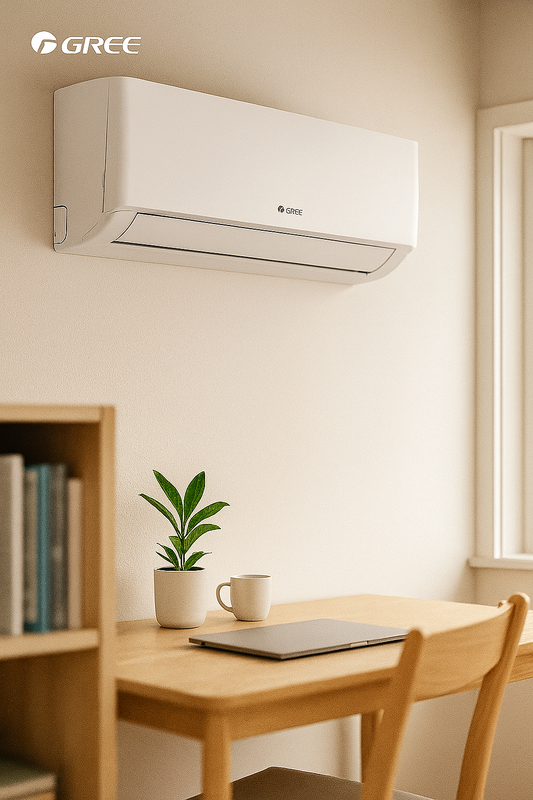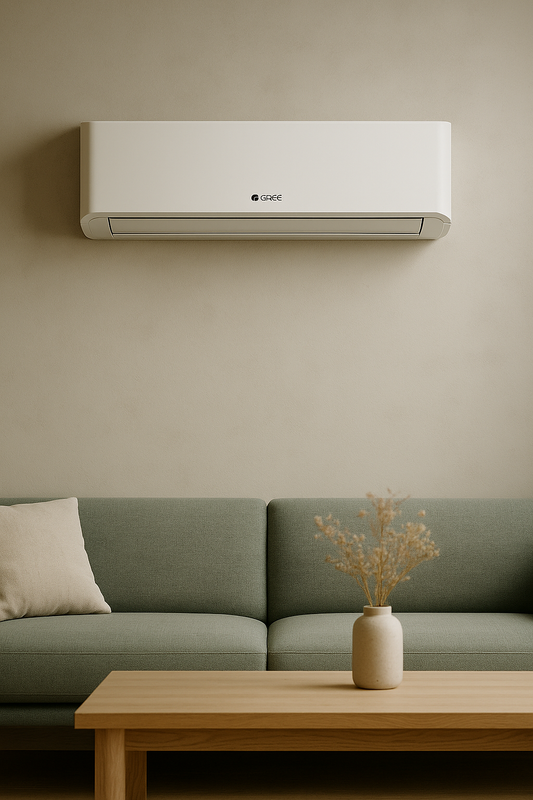Installation av Mitsubishi värmepump
Inledning
Att installera en Mitsubishi värmepump kan vara en effektiv lösning för att reglera temperaturen i ditt hem eller kontor. Denna artikel kommer att ge dig en översikt över installationen av en Mitsubishi värmepump samt dess fördelar och användningsområden.
Definition och bakgrund
En Mitsubishi värmepump är en typ av värmepump som används för att både värma och kyla inomhusmiljöer. Den fungerar genom att absorbera värmeenergi från utomhusluften och överföra den inomhus, eller vice versa beroende på inställningen. Mitsubishi värmepumpar är kända för sin energieffektivitet och pålitlighet.
Fördelar och användningsområden
En av de främsta fördelarna med att installera en Mitsubishi värmepump är dess förmåga att effektivt reglera temperaturen i olika typer av utrymmen. Denna typ av värmepump kan användas både i bostäder och kommersiella fastigheter för att skapa en bekväm inomhusmiljö året runt. Dess energieffektivitet kan också bidra till att minska energikostnaderna på lång sikt.
Utöver detta kan Mitsubishi värmepumpar vara ett miljövänligt alternativ för uppvärmning och kylning, eftersom de använder sig av luftburen värmeenergi istället för att bränna fossila bränslen. Detta kan minska den totala koldioxidutsläppen och bidra till en hållbarare miljö.
Relaterade tekniker, begrepp eller variationer
Det finns flera olika typer av värmepumpar tillgängliga på marknaden, varav luft-luftvärmepumpar och luft-vattenvärmepumpar är några vanliga alternativ. Varje typ har sina egna fördelar och användningsområden, men Mitsubishi värmepumpar är kända för sin höga kvalitet och avancerade teknologi.
Vanliga frågor (FAQ)
-
Hur lång tid tar det att installera en Mitsubishi värmepump?
Installationsprocessen kan variera beroende på faktorer som storlek på enheten och komplexiteten i installationen. Generellt sett kan en professionell installatör slutföra installationen inom några timmar till en dag.
-
Vilken typ av underhåll kräver en Mitsubishi värmepump?
För att hålla din Mitsubishi värmepump i gott skick är det viktigt att regelbundet rengöra filtren och kontrollera enhetens övergripande prestanda. Det rekommenderas också att genomföra en årlig service av en kvalificerad tekniker.
-
Kan jag installera en Mitsubishi värmepump själv?
Det rekommenderas starkt att anlita en certifierad installatör för att säkerställa korrekt installation och garantera att enheten fungerar som den ska. Felaktig installation kan leda till prestandaproblem och potentiella säkerhetsrisker.
Sammanfattning
Att installera en Mitsubishi värmepump kan erbjuda många fördelar, inklusive energieffektivitet, mångsidighet och miljövänlighet. Genom att förstå installationsprocessen och dess användningsområden kan du fatta informerade beslut när det gäller att reglera temperaturen i din bostad eller arbetsplats.
Installation Process
The installation of a Mitsubishi heat pump typically involves several key steps to ensure proper functionality and efficiency. It begins with a thorough assessment of the installation site to determine the optimal placement for the unit. This may involve considerations such as access to outdoor air, proximity to electrical outlets, and suitable mounting surfaces.
Once the installation site is determined, the next step is to securely mount the outdoor unit, often positioned on a stable platform or wall bracket. The indoor unit is then installed in the desired location within the building, typically high on a wall to facilitate optimal air distribution.
After the physical installation, the electrical connections and refrigerant lines are carefully connected, ensuring proper insulation and sealing to prevent any leaks. This is followed by the commissioning of the system, where the installer checks and adjusts settings to ensure the heat pump operates efficiently.
Energy Efficiency Considerations
One of the key aspects of Mitsubishi heat pumps is their energy-efficient operation, which can lead to cost savings for the end user. By harnessing heat energy from the surrounding air, these systems can deliver impressive heating and cooling performance while minimizing energy consumption.
Moreover, Mitsubishi heat pumps often feature advanced technologies such as inverter-driven compressors, which enable precise modulation of the system's output to match the specific heating or cooling demands. This results in consistent comfort levels and reduced energy wastage.
Remote Control and Smart Features
Many Mitsubishi heat pumps are equipped with remote control capabilities, allowing users to conveniently adjust settings from a distance. Additionally, some models integrate with smart home systems, enabling seamless integration with other connected devices for enhanced automation and energy management.
Case Study: Residential Installation
In a residential setting, the installation of a Mitsubishi heat pump can transform the living environment by providing efficient heating during colder months and refreshing cooling during warmer periods. For example, in a two-story home, a multi-split system can be installed to provide zoned heating and cooling, allowing for personalized comfort in different areas of the house.
Conclusion
The installation of a Mitsubishi heat pump offers the potential to enhance indoor comfort, reduce energy costs, and contribute to a more sustainable living or working environment. By understanding the installation process and the features of these systems, individuals and businesses can make informed decisions regarding their heating and cooling needs.
Energy Efficiency and Environmental Impact
In addition to providing efficient heating and cooling, Mitsubishi heat pumps contribute to environmental sustainability through their energy-efficient operation. By reducing reliance on traditional heating and cooling methods, these systems can help lower overall energy consumption and carbon emissions, making them a responsible choice for environmentally conscious consumers.
Furthermore, the use of advanced refrigerants with low global warming potential (GWP) in Mitsubishi heat pumps aligns with international efforts to minimize the environmental impact of cooling technologies. This commitment to eco-friendly refrigerants underscores Mitsubishi's dedication to sustainable practices.
Advanced Control and Monitoring
Mitsubishi heat pumps often feature advanced control and monitoring capabilities, allowing users to fine-tune settings for optimal comfort and energy efficiency. Some models offer intuitive interfaces and programmable schedules, enabling precise temperature management throughout the day.
Moreover, remote monitoring features provide real-time insights into system performance, allowing users to identify and address any potential issues promptly. This proactive approach to system management can enhance the longevity and reliability of the heat pump.
Commercial Applications and Benefits
Beyond residential use, Mitsubishi heat pumps offer significant advantages in commercial settings, such as office buildings, retail establishments, and hospitality venues. These systems can provide consistent and customizable climate control, creating a comfortable environment for employees, customers, and guests.
Furthermore, the energy-saving capabilities of Mitsubishi heat pumps can lead to substantial cost reductions for businesses, particularly in facilities with high heating and cooling demands. By optimizing energy utilization, businesses can achieve operational efficiencies and reduce their environmental footprint.
Industry Recognition and Awards
Mitsubishi heat pumps have garnered recognition and accolades within the HVAC industry for their innovative technology and performance. Awards and certifications from reputable organizations underscore the quality and reliability of these systems, providing consumers with added confidence in their investment.
Additionally, Mitsubishi's ongoing commitment to research and development ensures that their heat pumps continue to evolve, incorporating the latest advancements in energy efficiency, comfort, and sustainability.



